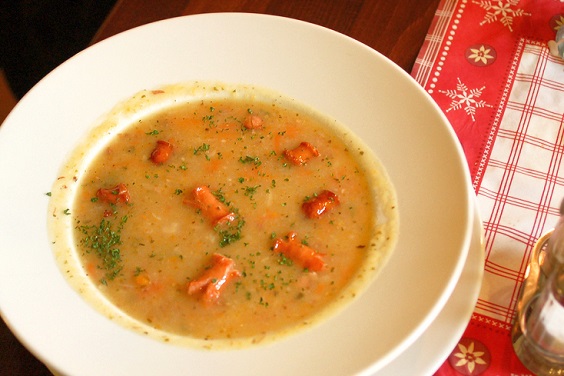
German potato soup is a traditional soup first enjoyed throughout Germany and now all over the world. As with many potato dishes, recipes vary widely so there is no one typical German potato soup. The main ingredient in this soup, of course, is potato, which is cooked in broth or salt water along with other vegetables, such as carrots and onions, and sometimes celery. Once the vegetables are cooked, the potatoes are usually mashed or pureed. Crispy bacon pieces can be added to the soup as an optional ingredient, along with various herbs and spices.
This soup is often served with wurst (sausages). Also, bread or rolls are usually crumbled into the soup.
Thanks to the potatoes this recipe is rich in glutamate, which is the purest taste of umami.

German Potato Soup
Ingredients
- 6 to 8 potatoes peeled and quartered
- 2 to 3 Tbsp. butter
- 2 small carrots diced or shredded
- 1/4 cup onion finely chopped
- 2 Tbsp. flour
- 1 qt. milk
- 2 Tbsp. parsley finely chopped
- 1 Tbsp. salt
- 1/2 tsp. seasoned salt
- 1/4 tsp. Ac’cent flavor enhancer
- 1/4 tsp. red pepper
- 1 chicken bouillon cube
Instructions
-
Cook potatoes in boiling salted water until tender.
-
Melt butter in 3 quart kettle until golden brown.
-
Add carrots and onions.
-
Cover and cook until tender. Remove from heat.
-
Blend in flour.
-
Stir in milk.
-
Add half of potatoes.
-
Mash rest of potatoes and add with rest of ingredients.
-
Heat until steaming hot.
Recipe Notes
Recipe courtesy of Cooks.com

